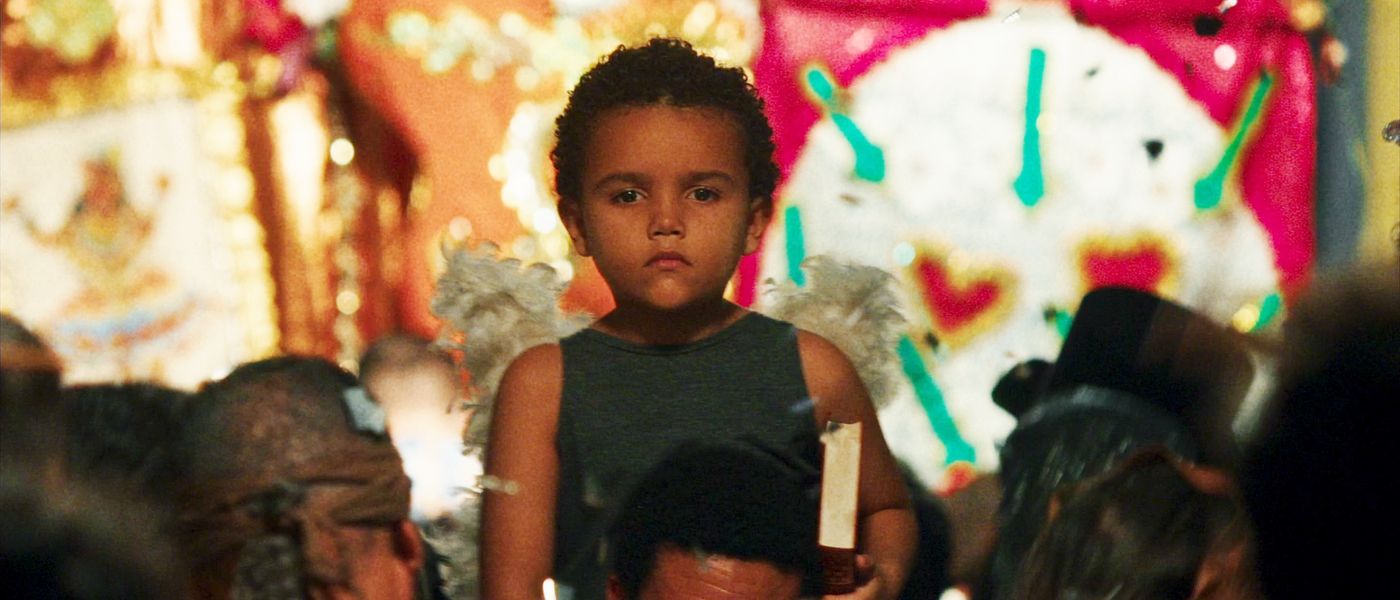Interview with Leonardo Martinelli, Samba Infinito director
by Léo Ortuno

by Léo Ortuno
By recreating the effervescence of the carnival to convey a character’s loneliness as he is cleaning the streets, Samba Infinito brilliantly plays with contrasts. Leonardo Martinelli conducts a musical tale where past and present blend into a nostalgic, dancing, musical score. From the festive parades to the grand Royal Library, the filmmaker paints a beautiful portrait of Rio, with Gilberto Gil as a wise sovereign of the land.
Interview with Leonardo Martinelli
Cultural blends
In Brazil, many of our habits and expressions emerge from the vibrant collision of Indigenous traditions, the culture of the African diaspora, and the legacy of European colonization. Samba itself was born from this blend—a musical and dance form that fuses African percussion with the brass instruments of jazz, among other influences. Carnaval is no different—it's a singular blend of influences from all over the world that come together to create something unmistakably Brazilian. With our film, we wanted to channel that spirit, allowing all these elements to erupt into a story of loss and resilience.
The carnival
Experiencing street carnival in Brazil is intense, and it is understandable that it is not something for everyone. For many, it may be the moment in their lives when they are surrounded by the most people per square meter. Public spaces are taken over by people, by celebration, music and fantasy. For me, carnival represents the possibility of the city belonging to the people, something that, unfortunately, is not a reality all the time. In Samba Infinito there is a symbolic contrast, where we see the sobriety and labor of a worker who deals with the streets, while the city lives its most oniric moment. Then adding this to the story of someone who was facing enormous personal grief, and thinking about how the city can enhance the depth of these feelings.
Saudade
I think nostalgia in the film comes less from a desire to return to the past and more from a kind of poetic tension: the beauty and violence of transience. The end of Carnival, the absence of someone who is gone, and even the emergency to help a lost child. Gilberto Gil was a reference not just musically, but philosophically—his vision of Brazil embraces beauty in the contradiction, and that was a huge inspiration. In the film, we explore this layered temporality, where we're not exactly sure when the things we're seeing take place. I was hoping to evoke something in particular: a word we have in Portuguese, "saudade", which means not only missing someone or something but also their beauty, memory, and enduring presence of what is gone.
Music and dance
Music and movement are at the heart of Samba Infinito, not just as aesthetic choices but as emotional languages. One of our aims was to capture how bodies behave in public space, how they drift, collide, celebrate or isolate themselves. It was important for us to work with performers who understood the energy of carnival and could embody both joy and melancholy through movement. For the music, we sought to use it in multiple ways—ranging from non-diegetic sound to live performances within the scenes, and even a musical breakout. I believe that these musical elements, when intertwined with choreography, open up new possibilities for expressing the emotions we wanted to convey.